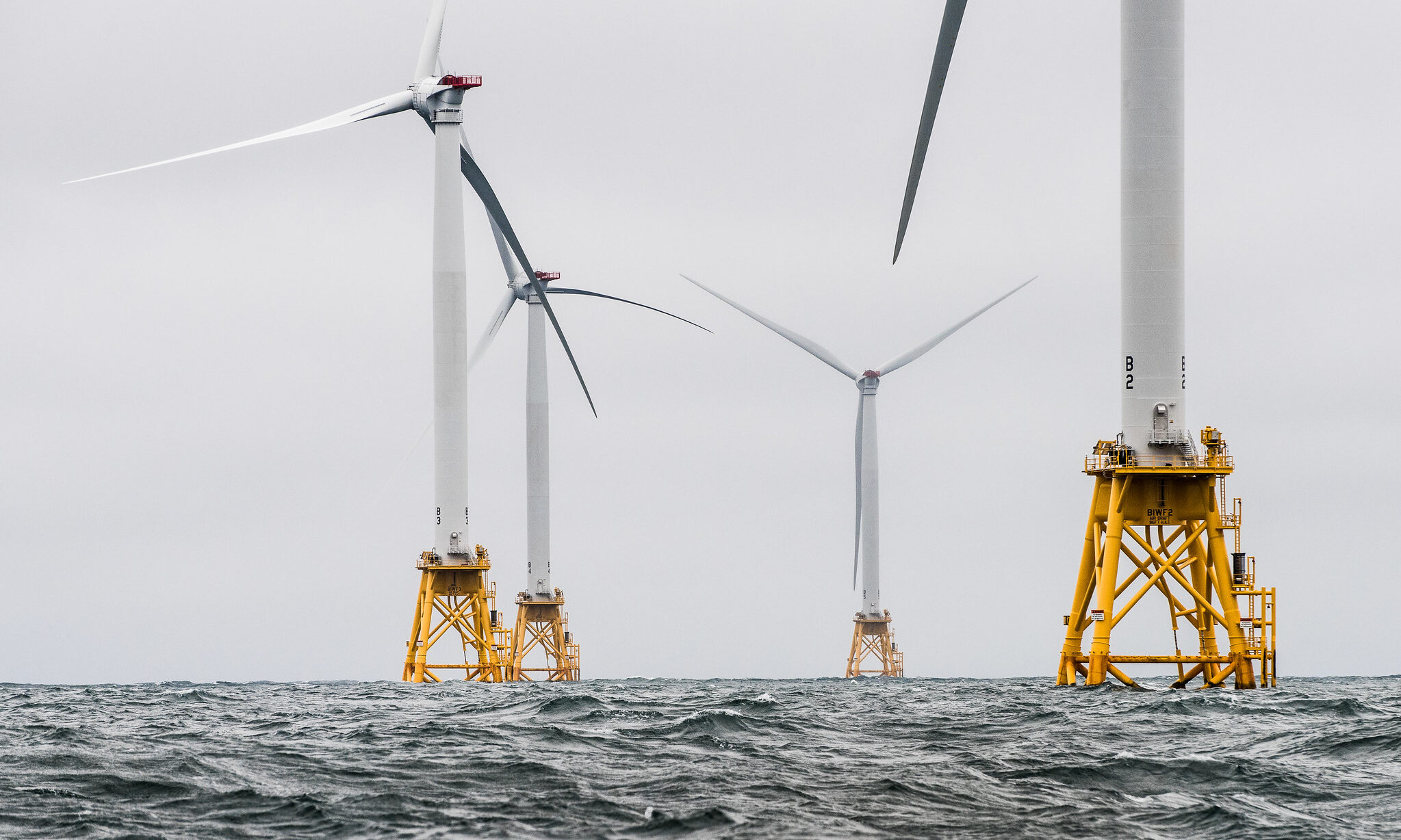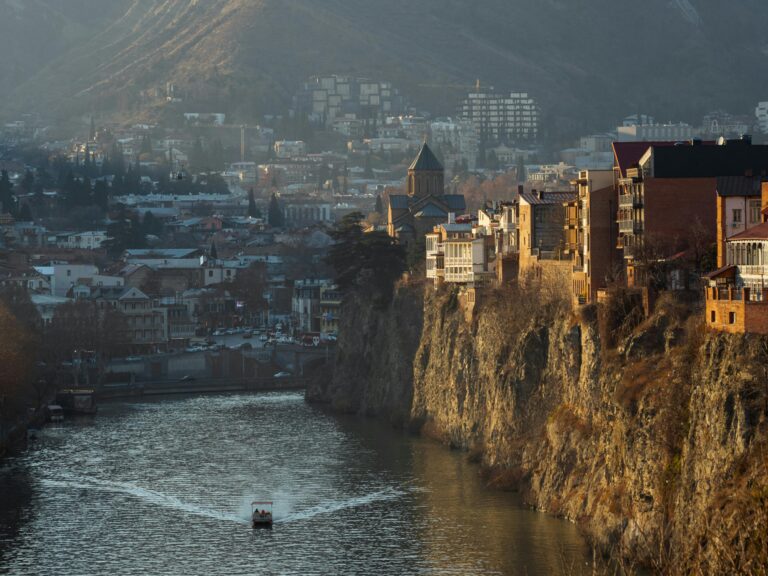
The article is published as part of a joint issue “Green Synergies: Sustainability, Security, and Taiwan-Europe Collaboration” between CHOICE and the University of Nottingham’s Taiwan Insight.
Offshore wind energy plays a central role in Taiwan’s energy transition ambitions. However, the technology is more than just a source of renewable energy to power Taiwan’s households and semiconductor fabs. Offshore wind has strengthened Taiwan-Europe collaboration, with Taiwan drawing extensively on European expertise to establish itself as a regional leader in this field.
Beyond such material collaborations, offshore wind plays a significant role in the discursive realm, shaping Taiwan’s global image and identity as a responsible actor in addressing climate change. A review of Taiwan’s official climate diplomacy narratives reveals that images of offshore wind are often used as a visual shorthand to demonstrate Taiwan’s green credentials. Offshore wind is also frequently featured in international media coverage of Taiwan, with an analysis of news stories between 2015 and 2024 revealing how this coverage has evolved from presenting Taiwan as an ambitious climate leader to depicting it as falling behind due to policy missteps.
Taiwan-EU Offshore Wind Collaboration
Wind power is one of Taiwan’s key strategies for achieving net zero by 2050, with installed capacity of offshore wind power expected to reach 13.1 GW by 2030 and 40-55 GW by 2050. While current capacity is still behind the government’s goal of 5.7 GW by 2025, Taiwan is now the seventh-largest producer of offshore wind energy globally. In January 2025, almost 46 percent of Taiwan’s renewable energy generation came from offshore wind.
The sector has also become a focal point for collaboration with European companies. In 2023, the EU retained its position as Taiwan’s largest foreign investor, with €2.9 billion in investments –primarily concentrated in the offshore wind sector – driving rapid industry development in Taiwan. For example, Danish multinationals Ørsted and Vestas have respectively developed Taiwan’s largest wind farm and partnered with local manufacturers to produce wind turbine blades in Taichung.
However, the Taiwan-EU relationship has not all been smooth sailing. In 2021, Taiwan’s Ministry of Economic Affairs (MOEA) introduced a localization policy for its Round 3 offshore wind tenders, mandating that at least 60 percent of offshore wind farm components be sourced locally – except when the domestic supply chain could not meet project needs. Many international developers argued this requirement would dramatically increase construction costs, undermining project profitability. This, combined with other factors, such as expanded renewable energy construction in Europe spurred by the Russian war on Ukraine, led to some European developers – including Germany’s EnBW and RWE – scaling back their operations in Taiwan in 2023.
In July 2024, the EU filed a WTO dispute against Taiwan, claiming that its local content requirement and award criteria for offshore wind projects violated WTO rules by discriminating against imported goods and services. In November, the two parties resolved the dispute, with Taiwan committing to greater flexibility for implementing offshore wind projects and pledging not to include localization requirements as eligibility conditions or award criteria.
While this resolution was welcomed, other regulatory uncertainties continue to concern international investors. Taiwan’s transition from some of the world’s most generous feed-in tariffs (FITs) – a subsidy that incentivizes renewable energy investment by guaranteeing producers a fixed energy price – to a market-driven model requiring developers to secure financing through corporate power purchase agreements (CPPAs) is another challenge facing developers. Partnerships with local stakeholders offer EU developers one means of navigating Taiwan’s complex regulatory and policy environment. Danish investment firm Copenhagen Infrastructure Partners (CIP) is a case in point, having worked with Taiwan’s China Steel to develop the Zhong Neng wind farm, which began operations in 2024. In March 2025, CIP secured a power purchase agreement for Google’s first offshore wind power purchase deal in the Asia-Pacific.
Looking ahead, Taiwan-EU offshore wind collaboration may encounter both opportunities and risks. The US pivot away from offshore wind – exemplified by the Trump administration’s surprise decision to halt construction of Equinor’s New York wind farm – will have significant consequences for European companies. Greater investment in Taiwan, which can also serve as a gateway to other Asian markets, may help weather the storm. Future collaboration could emerge in cutting-edge technologies such as floating offshore wind, with European countries, including France, already leading the way. Floating wind will likely be key for Taiwan’s future offshore development, as sites suitable for fixed-bottom turbines are running out. However, progress has been delayed due to policy bottlenecks.
Taiwan’s Climate Identity: From Offshore Wind Pioneer to a Policy Crisis
Thanks in large part to the involvement of European partners, Taiwan has emerged as a regional leader in offshore wind energy, attracting considerable media coverage. The media’s evolving portrayal of Taiwan’s offshore wind development – from ambitious to struggling – reveals how policy decisions have shaped Taiwan’s global identity. Given the importance of public opinion to Taiwan’s sovereignty and its long-held desire for inclusion in the UNFCCC, its international climate reputation is a matter of significant concern.
My analysis of 138 climate-related articles published between 2015 and 2024 in English-language media from the US, the UK, the EU, Japan, and Australia revealed that offshore wind was the most frequently discussed form of energy, even surpassing the contentious topic of nuclear energy. This prominence reflects both Taiwan’s pioneering commitment to offshore wind development, and the active participation of international companies. Most articles portrayed Taiwan as a contributor to global climate action, with its ambitious wind development goals positioning it as a regional leader. Taiwan’s experience in offshore wind is often cited as an example that other countries, such as Australia, can learn from. Taiwan’s offshore wind sector is also described as a “stepping stone into the Asia-Pacific,” where foreign firms can gain experience before expanding into other markets.
Taiwanese companies have been portrayed as trailblazers in offshore wind development. For example, TSMC made headlines in 2020 for signing the world’s largest corporate renewable power purchase agreement with Ørsted. Similarly, Swancor’s development of a cutting-edge material that enables wind turbine blades to be recycled was hailed as contributing to solving one of the industry’s biggest problems.
However, 2021 marked a shift in the discourse, with media coverage becoming more critical as Taiwan’s progress fell short of expectations. Some reports described the sector as being in “a downward spiral” or facing a “crisis,” often citing the experiences of international developers like CIP. While the COVID-19 pandemic and the Russian invasion of Ukraine were mentioned as contributing to delays, the greatest attribution was assigned to “policy missteps,” particularly Taiwan’s “byzantine and inflexible” local content requirements. It remains to be seen whether Taiwan’s decision to eliminate these requirements will help restore the earlier media optimism surrounding its offshore wind sector. Such negative coverage risks undermining Taiwan’s international climate credibility, painstakingly developed through climate diplomacy narratives.
Offshore Wind in Climate Diplomacy
Taiwan’s official climate diplomacy narratives have attempted to leverage offshore wind to present Taiwan as a contributor to global climate action. Excluded from the UNFCCC, climate change has formed a key part of Taiwan’s public diplomacy efforts to gain increased international recognition as a responsible stakeholder and constructive partner.
Videos published on the 潮台灣 Trending Taiwan YouTube channel, managed by the Ministry of Foreign Affairs (MOFA), frequently feature offshore wind turbines as symbols of the country’s green energy transition. A video titled ‘Riding the Wind’ (2019) presents Taiwan as an active participant in global climate action through the development of its first offshore wind farm. The video conveys that various elements of Taiwanese society are all committed to a green transition – as seen through a fisherman expressing his hope for more coastal wind farms. This portrayal is somewhat ironic, as ongoing conflicts with local fishermen are one of the key challenges facing offshore wind development in Taiwan.
In another video titled ‘A Green Promised Land’ (2022), an Indigenous grandmother telling her granddaughter a legend of the great flood serves as an allegory for modern-day climate change. In this narrative, renewable energy, including wind energy, is portrayed as a gift from Mother Earth, offering humanity the means to sustain itself. This reflects how Indigenous Peoples act as non-state diplomatic actors in Taiwan’s public diplomacy efforts. The videos thus portray Taiwan’s approach to public climate diplomacy, with the evocative image of white turbines along the Formosan coastlines used as a visual representation of Taiwan’s commitment and contribution to the global decarbonization effort.
Looking Ahead
Offshore wind energy is more than just a cornerstone of Taiwan’s green transition; it has also strengthened ties with Europe – a key climate leader – despite policy hurdles along the way. Beyond direct collaboration, offshore wind showcases how cleantech is shaping Taiwan’s international climate identity by driving media attention and bolstering Taiwan’s climate diplomacy narratives. Taiwan’s climate identity – whether it is seen as a climate leader or laggard – will increasingly influence its soft power and relationships, not only with the EU but also with other key partners, including Southeast Asia, where climate change has recently ranked as the top public concern. If Taiwan can regain momentum in offshore wind energy development through sustained collaboration with the EU, its international reputation will benefit – and so will the planet.
Written by
Elizabeth Frost
Elizabeth Frost is a British Master’s candidate in Climate Change and Sustainable Development at National Taiwan University, where her thesis explores constructions of Taiwan’s climate identity. Her research interests include climate diplomacy and the geopolitics of the energy transition. Feel free to connect with Elizabeth on LinkedIn.


